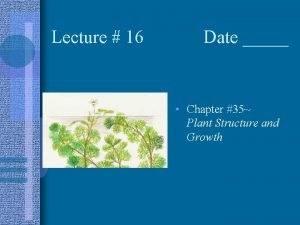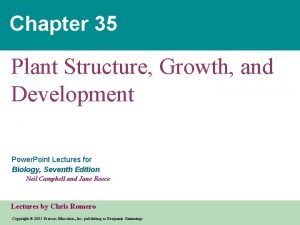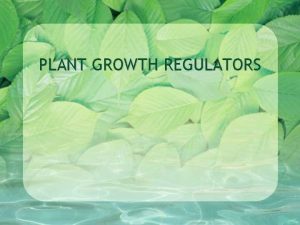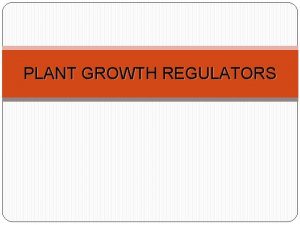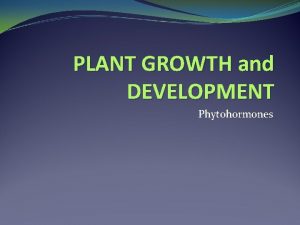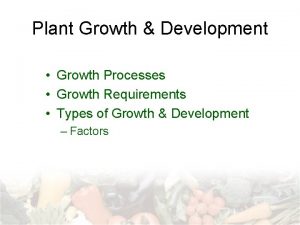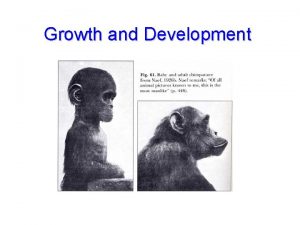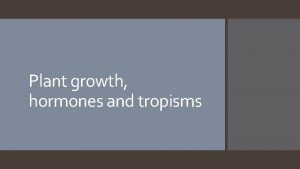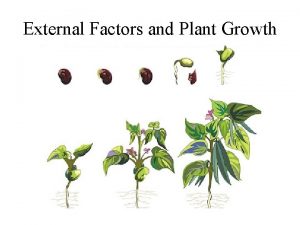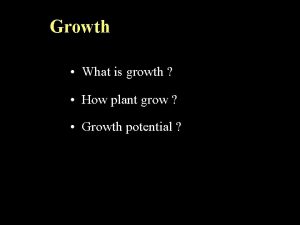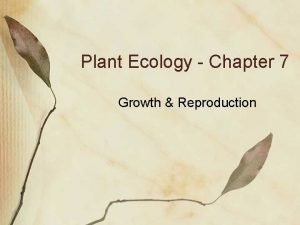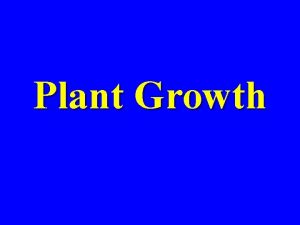Plant Growth and Development Topic 1 1 plant













- Slides: 13

Plant Growth and Development Topic 1. 1: plant tissues and their function

Learning Outcomes from this powerpoint • Know the structure and function cell components



Vacuole • Isolating materials that might be harmful or a threat to the cell. • Containing waste products. • Containing water in plant cells. • Maintaining internal hydrostatic pressure or turgor within the cell. • Maintaining an acidic internal p. H. • Containing small molecules.

Endoplasmic Reticulum • Proteins which are synthesised by the cell and then released into outer medium of the cell are called secretory proteins. Examples of secretory proteins include mucus, digestive enzymes and hormones. • The ER produces transmembrane proteins and lipids

“Waxy” cuticle

Golgi Apparatus

Golgi Apparatus • It has been likened to the cell's post office. A major function is the modifying, sorting and packaging of proteins for secretion. It is also involved in the transport of lipids around the cell, and the creation of lysosomes

Mitochondria creates • Mitochondria are the main sources of energy for each cell, and therefore for the plant as a whole. The process for converting raw nutrient materials into usable energy is known as cellular respiration. While energy production is the main function of the mitochondria, they also perform other services for a cell.

Nucleus • This organelle has two major functions. It stores the cell's hereditary material, or DNA, and it coordinates the cell's activities, which include intermediary metabolism, growth, protein synthesis, and reproduction (cell division). Only the cells of advanced organisms, known as eukaryotes, have a nucleus.

Cytoplasm • Cytoplasm contains molecules such as enzymes which are responsible for breaking down waste and also aid in metabolic activity. Cytoplasm is responsible for giving a cell its shape. It helps to fill out the cell and keeps organelles in their place.

Cell Wall • The cell wall is the protective, semi-permeable outer layer of a plant cell. • A major function of the cell wall is to give the cell strength and structure, and to filter molecules that pass in and out of the cell.
 Stages of rice
Stages of rice Functions of ethylene
Functions of ethylene Chapter 35 plant structure growth and development
Chapter 35 plant structure growth and development Xylem und phloem
Xylem und phloem Primary growth and secondary growth in plants
Primary growth and secondary growth in plants Paragraph writing strategies
Paragraph writing strategies Narrowed down topic examples
Narrowed down topic examples Growth analysis
Growth analysis Shoot system
Shoot system Primary growth and secondary growth in plants
Primary growth and secondary growth in plants Step growth polymerization vs chain growth
Step growth polymerization vs chain growth Geometric growth population
Geometric growth population Neoclassical growth theory vs. endogenous growth theory
Neoclassical growth theory vs. endogenous growth theory Organic growth vs inorganic growth
Organic growth vs inorganic growth


